What makes a new country feel like “home”? While cost of living, healthcare, and residency options are all critical for a successful move abroad, the real magic often lies in something less tangible: how easy it is to fit in.
For many expats, the ability to connect with others, build friendships, and feel welcomed by the local community is what transforms a good destination into a great one. Whether it’s the friendliness of locals, the presence of an active expat scene, or the ease of navigating daily life in English, certain places just make it simpler to settle in and feel like you belong.
In no particular order, we’re spotlighting eight countries where expats find it especially easy to integrate. These are destinations with well-established expat communities, plenty of social and cultural opportunities, and a lifestyle that feels welcoming right from the start. Many also offer the comfort of English being widely spoken, or at least easily managed, which helps ease the transition.
Whether you’re looking to make a permanent move, explore a part-time overseas lifestyle, or simply want to find a place where you’ll feel at home quickly, these are the countries that make expat life more accessible, more enjoyable, and more fulfilling.
The World’s Best Retirement Havens for 2026
The World’s Best Retirement Havens for 2026
24 Countries Compared, Contrasted, Ranked, and Rated. You don’t have to be rich to enjoy a pampered retirement, you just need to know where to go. With our 35th Annual Global Retirement Index, our experts hand you a detailed roadmap. Details—and a Special Offer—Here

By submitting your email address, you will receive a free subscription to IL Postcards, Overseas Dream Home, The Untourist Daily and special offers from International Living and our affiliates. You can unsubscribe at any time, and we encourage you to read more about our Privacy Policy.
Belize
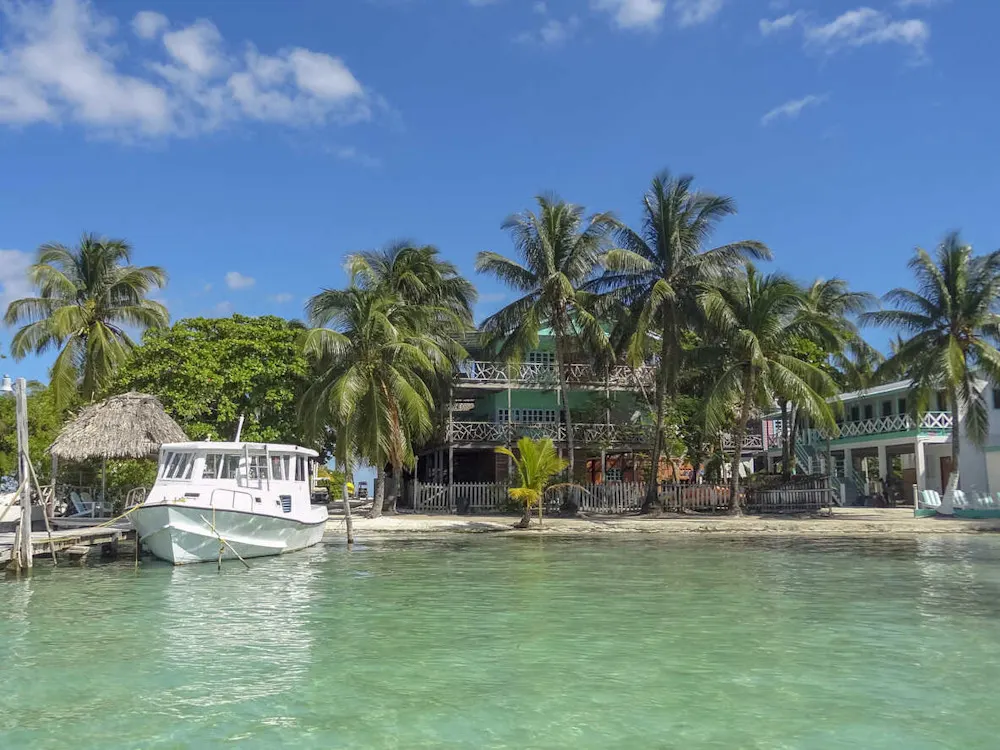
By Jane Thompson Hasenmueller
Belize has become a destination of choice for many expats, not only because of its rich cultural heritage but also because so many elements make moving here a breeze—make that a Caribbean breeze. Not only are there established groups of expats around the country ready to welcome you in, but Belizeans are, for the most part, ready to welcome you too. Belize is the only Central American country where English is the official language, making the transition to your new country much easier.
Though understandably, you might miss friends and family from home, one of the great things about Belize is that it’s close to the US and Canada, with major cities offering direct flights from many locations. This makes it easy to come and go and allows your friends and family to visit.
There is a sense of community here that makes getting involved easy. Expats gravitate to the Rotary Clubs located in many of the communities around Belize, but many other groups also provide a means of being involved. Look at the local Facebook groups and you’ll find all kinds of activities. Pickleball has taken off here, as it has in the USA, so if that’s your thing, a group is waiting for you. Getting involved with local concerns is a great way to meet locals and show interest in the country that is your host. Helping out is an excellent way of fitting in.
Many towns are great for expats, from San Pedro on Ambergris Caye (pronounced “key”), where the majority of expats settle, to the Corozal area up north, to the peninsula where Placencia is located. You’ll find sandy beaches and a Caribbean vibe. But if that’s not your thing, there are expats in the towns of San Ignacio and Santa Elena, which also get you closer to the jungle and provide some hilltop views. And if you want to enjoy the jungle and rainforest, head to Punta Gorda. Pick your spots and come for a visit. Check out the Facebook pages in each place, because it’s the main way everything is communicated. And if you’re not already on WhatsApp, sign up—because you’ll want to collect the phone numbers of those you meet, as that’s how it’s done here.
The first time I came to Belize, I stayed at a secluded resort beach on Ambergris Caye for two weeks. We read, snorkeled, and occasionally took the water taxi into San Pedro. We were exhausted and needed a break from our jobs back in the States. We thought the people were incredibly friendly and welcoming, but never dreamed we’d live here. Eight years later, we came to Belize—after selling all our belongings, packing up, and moving to Placencia, sight unseen. We have felt welcome from day one, and I think you will too.
Get Your Free Belize Report Here
Get Your Free Belize Report Here
Want to discover more about retiring with ease to Belize?
Simply enter your email address below and we'll send you a FREE report - Belize: The Friendly, Affordable Caribbean Nation. You'll receive all the latest advice on visas, property and healthcare from our most recent research.

By submitting your email address, you will receive a free subscription to IL Postcards, Overseas Dream Home, The Untourist Daily and special offers from International Living and our affiliates. You can unsubscribe at any time, and we encourage you to read more about our Privacy Policy.
Portugal
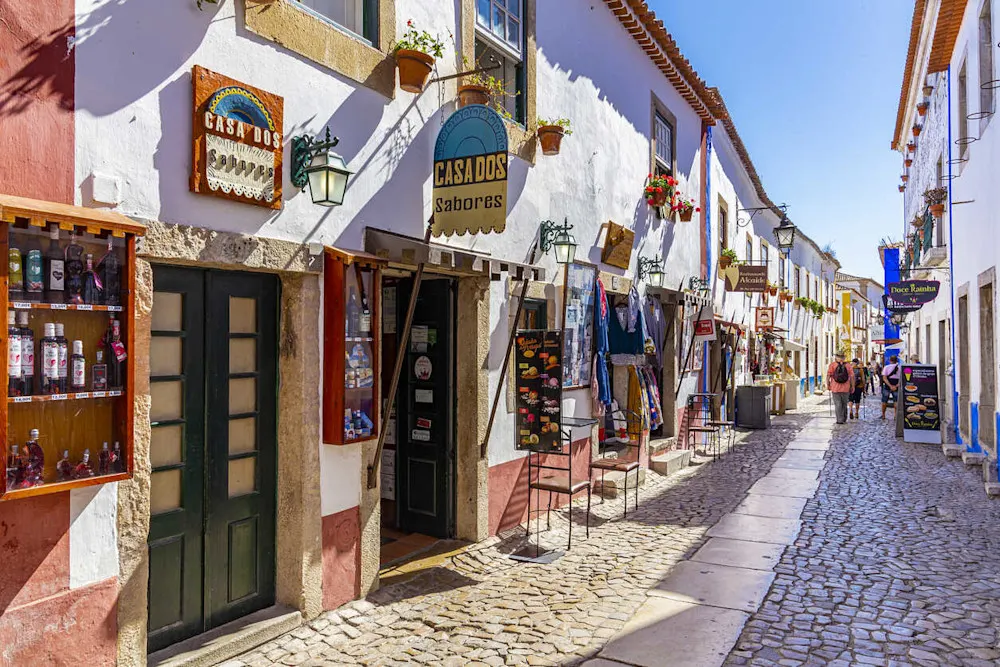
By Terry Coles
Glancing around the crowded mercado, a variety of hair and skin tones caught my eye, almost as colorful as the assortment of produce splayed out before me. Portugal has long been a sunny escape for English-speaking Britons from the UK, and an affordable haven for others.
As the sixth most proficient English-speaking country in Europe, foreigners can ease into expat life without knowing Portuguese, at least in the beginning.
While expat communities can be found throughout the country, the highest concentration of foreigners is in Lisbon, Porto, and the Algarve. Expat groups organize socials, meet for group hikes and bike rides, play pickleball, practice yoga, or dance the night away.
We have friends from around the world here, Poland, Holland, Japan, Belgium, Sweden, Norway, Ireland, the UK, and North America, just to name a few.
As for the Portuguese people, they absolutely love their country, and welcome foreigners with open arms and double-cheeked kisses. Smiles and passing pleasantries like “Bom dia” are exchanged in the streets by everyone, from mail carriers to the elderly nestled on park benches along the way.
A bartender was so impressed with my husband chatting to him in Portuguese that he rewarded him with two free glasses of wine. The owner of a tiny restaurant below our apartment often accepts deliveries for us when we’re not at home. To thank her, we presented her with a box of chocolates that nearly brought tears to her eyes.
Portugal is a tiny, safe country with stunning natural beauty, friendly locals, mild year-round weather, affordable living, excellent healthcare, and just about everything else you need for a secure, happy life.
Pull up a chair at a corner café, order a cup of coffee and a sweet pastry, and breathe in the essence of your new life.
Get Your Free Portugal Report Today!
Get Your Free Portugal Report Today!
Want to discover more about retiring with ease to Portugal?
Simply enter your email address below and we'll send you a FREE report - Explore the Old World in Laidback Portugal. You'll receive all the latest advice on visas, property and healthcare from our most recent research.

By submitting your email address, you will receive a free subscription to IL Postcards, Overseas Dream Home, The Untourist Daily and special offers from International Living and our affiliates. You can unsubscribe at any time, and we encourage you to read more about our Privacy Policy.
Mexico
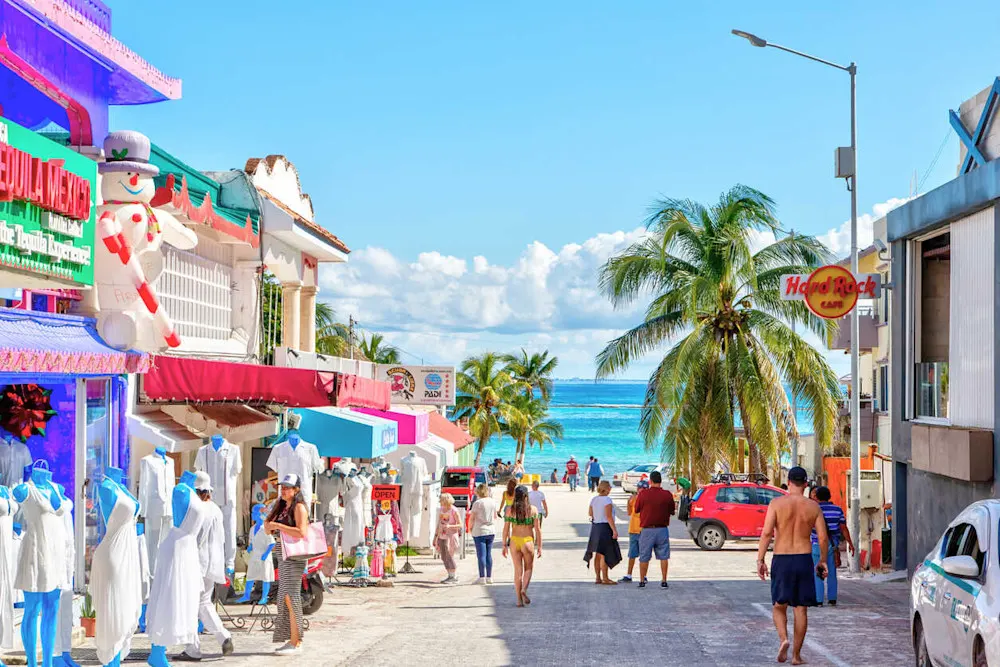
By Bel Woodhouse
As one of America’s favorite travel destinations, Mexico is well-versed in all things American. So, it’s easy to fit in. Plus, with over a million Americans and over half a million Canadians already living in Mexico, it’s easy to make friends.
You’ll find big, happy expat communities in the highlands in places like Lake Chapala and San Miguel de Allende, or on the beach in Puerto Vallarta or the Riviera Maya, so there’s a lifestyle and environment to suit everyone. It also means it’s easy to make friends, and there’s always someone to go on adventures, day trips, travel, or join groups with. Best of all, they always have a Facebook group to join, so you can make friends before you even go.
In all of these places, you don’t even have to speak Spanish. Mexicans are warm and friendly and make you feel welcome, from having menus printed in English to just about every medical facility having an English-speaking doctor on staff. You don’t have to spend years learning Spanish. Of course, it’s always more fun when you do, and speaking from experience, it enriches your life.
Another reason Mexico is so easy to fit into is the ease of travel. There are cheap flights, oftentimes under $100, to popular expat-friendly cities throughout Mexico. I’m talking Chicago to León, Bajío (the closest airport to San Miguel de Allende) for $95, or Miami to Mérida for $65.
One big bonus is shopping. All the big U.S. brands are here—Sam’s Club, Costco, Walmart, and the like. But don’t forget your local mercados. I find amazing things there and like to support local businesses. Plus, it’s sweet when an abuela smiles and gives you half of her parsley because you need it for a recipe. Mexicans are like that, happily sharing, so everyone is happy. It’s their culture. The people are why, like me, hundreds of thousands of Americans and Canadians love living in Mexico, too.
Get Your Free Mexico Report Today!
Get Your Free Mexico Report Today!
Want to discover more about retiring with ease to Mexico?
Simply enter your email address below and we'll send you a FREE report - Mexico: The Perfect Close-to-Home Retirement Haven.
You'll receive all the latest advice on visas, property and healthcare from our most recent research.

By submitting your email address, you will receive a free subscription to IL Postcards, Overseas Dream Home, The Untourist Daily and special offers from International Living and our affiliates. You can unsubscribe at any time, and we encourage you to read more about our Privacy Policy.
Costa Rica
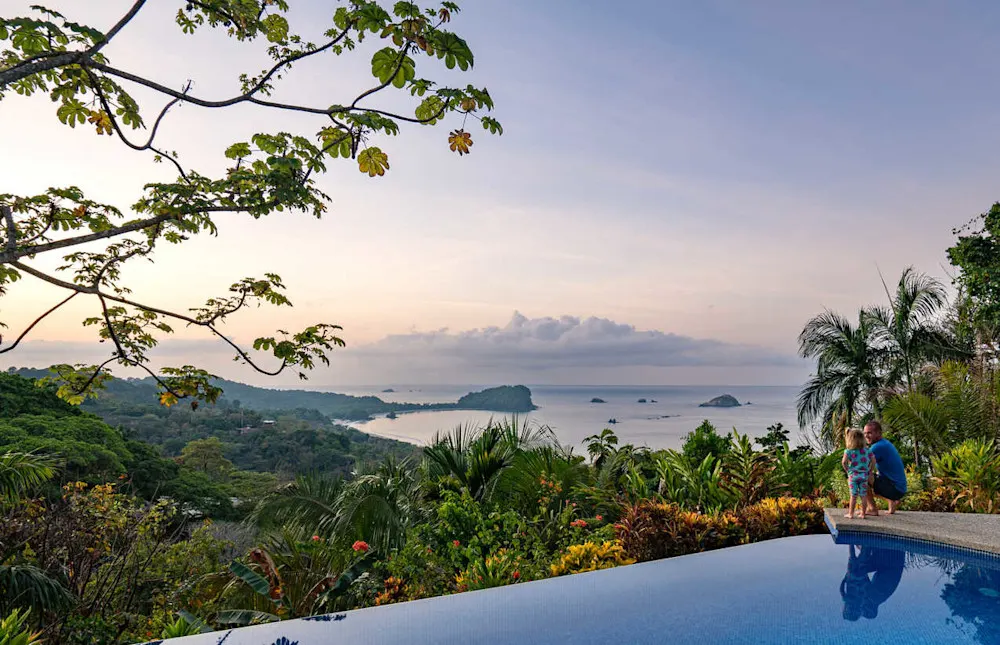
By Bekah Bottone
Thinking of moving to Costa Rica? Whether you’re drawn to beach breezes, mountain air, or lakeside tranquility, there’s a place here for everyone, and a welcoming community waiting for you.
Expats have been flocking to Costa Rica for more than 40 years, and the established communities around the country make integration easy. I fell in love with Costa Rica in 1997; I was smitten with the Ticos’ friendly vibe and Pura Vida lifestyle.
Ticos are kind, welcoming, and especially patient with Spanish learners. As you walk down the street, people greet you with smiles and a friendly “adiós.” Learning Spanish is a way to integrate more into the local culture, and joining classes helps you connect with other expats in similar situations.
The beach areas, like Tamarindo on the Gold Coast, are popular with both families and retirees. Tamarindo has a large expat community, and local women’s dinner meet-ups make finding new friends easy. Online groups are also active and helpful for newcomers. Another plus of beach living? Everyone gathers at sunset. It’s a natural way to meet people while taking advantage of happy hour deals.
For those who prefer cooler temperatures and fewer tourists, inland areas like Grecia offer a different experience. There are weekly meetups at cafés where expats gather, and the town has good access to healthcare and public transport. Housing is available at different elevations, with beautiful mountain views, though the steep roads can be a challenge for some.
Lake Arenal, with its peaceful surroundings and scenic backdrop of Volcano Arenal, is another draw. Nuevo Arenal has a growing expat scene, live music, and restaurants. Nearby towns like Tronadora offer a more local feel. The area’s natural beauty, affordability, and tranquility appeal to those seeking a slower pace.
No matter where you land, the climate and lifestyle make spontaneous meetups easy. A quick message, “Let’s meet at the beach or park in 15 minutes”, is often all it takes to gather a group.
There’s plenty to do here, from surf lessons and pottery classes to workout groups and paddleboarding. The warm weather and lush surroundings bring people together.
In Costa Rica, we live life outside. People are active, open, and community-minded.
Get Your Free Costa Rica Report Here
Get Your Free Costa Rica Report Here
Want to discover more about retiring with ease to Costa Rica?
Simply enter your email address below and we'll send you a FREE report - Explore the Old World in Laidback Costa Rica.
You'll receive all the latest advice on visas, property and healthcare from our most recent research.

By submitting your email address, you will receive a free subscription to IL Postcards, Overseas Dream Home, The Untourist Daily and special offers from International Living and our affiliates. You can unsubscribe at any time, and we encourage you to read more about our Privacy Policy.
Ecuador
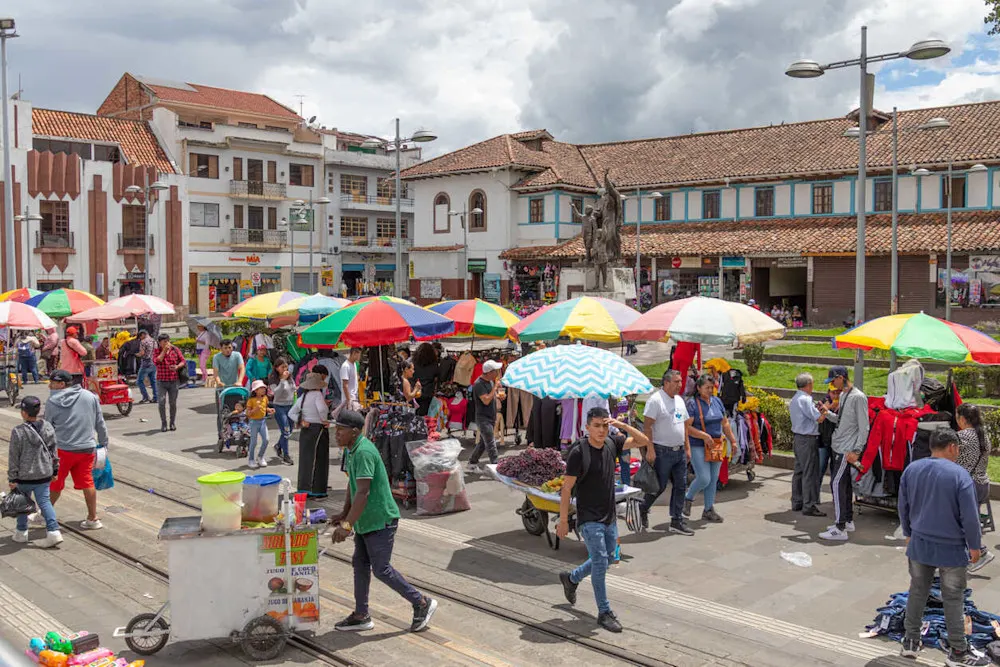
By Joel Kaplan
Among the many challenges we experienced in moving to Ecuador 14 years ago, choosing the place we would live and feel like we were truly at home came surprisingly easy. At least compared to buying a house, shipping our belongings in a container, and the myriad other decisions that must be made when preparing to live in a foreign country.
After months of scouring the internet for scraps of information (this was 15 years ago), we made a list of three or four cities and towns that we thought might fit our needs and booked a month-long investigative trip to Ecuador. Our decision-making process ultimately came down to the vibe of each city. We narrowed it down to two places: Cotacachi and Cuenca, two of Ecuador’s most popular towns for expats.
Cuenca is a beautiful and historic city in the southern Andes Mountains with a population of about 500,000. It features stunning colonial architecture and offers lots of cultural activities to enjoy, from concerts to museums and more. For those who enjoy nightlife, there are bars, restaurants, and clubs to keep you busy. For our taste, however, we thought a smaller, more laid-back town would be a better fit.
Our first few days in Cotacachi, located in the northern Andes, just felt right. The locals call it “muy tranquilo,” Spanish for “very tranquil.” The town itself has fewer than 10,000 residents, but there are 43 Indigenous villages surrounding Cotacachi, adding another 20,000-plus people to the mix. This gives Cotacachi a magical vibe and cultural richness that we found irresistible.
Over our 14 years here, the expat population has grown to somewhere between 300 and, by some estimates, 700 or 800 people, though no one knows for sure. We now have many new restaurants and tiendas offering more “big city” options, but Cotacachi remains the charming little town we fell in love with. What we do know is that following our gut instincts led us to fit into a different culture, learn a new language, and ultimately live our best lives ever.
The World’s Best Retirement Havens for 2026
The World’s Best Retirement Havens for 2026
24 Countries Compared, Contrasted, Ranked, and Rated. You don’t have to be rich to enjoy a pampered retirement, you just need to know where to go. With our 35th Annual Global Retirement Index, our experts hand you a detailed roadmap. Details—and a Special Offer—Here

By submitting your email address, you will receive a free subscription to IL Postcards, Overseas Dream Home, The Untourist Daily and special offers from International Living and our affiliates. You can unsubscribe at any time, and we encourage you to read more about our Privacy Policy.
Malta
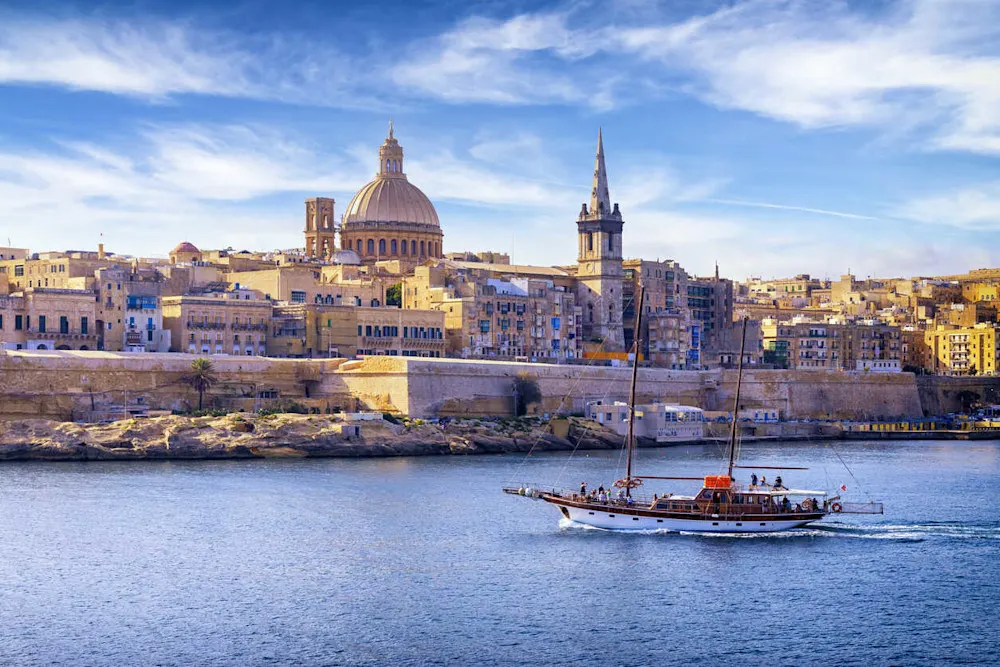
By Mary Charlebois
Malta and its sister island, Gozo, are a welcoming haven for expats, thanks to their friendly locals and strong sense of community. English is the official second language and the language of all government business, so it’s widely spoken, easing communication and making integration that much smoother. With frequent cultural events and thriving social networks, newcomers can quickly build connections, making Malta an ideal place to settle and feel at home.
On my very first morning in our Gozo village, Nadur, I stood at the bus stop reading the schedule. A voice behind me asked, “Are you going to Victoria?” I turned to see a smiling face and answered, “Yes, to the supermarket.” “I will help you. That is where I am going.” That’s when I made my first friend, Rose, a Canadian who lives part of the year in Toronto and part of the year in Nadur.
Since that day, we’ve befriended Maltese locals and international expatriates alike. Our village, Nadur, is known as “Little America” because of its concentration of American expats. But really, it could be called an international village; we have friends and neighbors from the United States, Canada, England, Ireland, Switzerland, South Africa, Lithuania, and many other countries. Our afternoon coffees in the village square often feel like a mini UN meeting.
Gozo isn’t the only place where expats will find a welcoming community. On the main island of Malta, places like St. Paul’s Bay, Mellieħa, and Birżebbuġa also have a high percentage of foreign residents. But wherever you choose to settle, you’re likely to be welcomed warmly by your neighbors. Hospitality is ingrained in the culture here.
Building community in the Maltese Islands is easy. Often, it starts with a chat at the village café or market. Attend a local event, festivals, concerts, food fairs, or the many annual celebrations, and you’ll find people socializing with family, friends, and neighbors. Ask around for groups or clubs that match your interests, such as walking, cooking, crafts, games, or sports. There are even groups to help you learn Maltese, which can be a challenge for English speakers. We’ve found many of these through Facebook, where expat communities share invitations to events and meetups.
Integrating into life here doesn’t take much. A friendly smile and a simple “good morning” can be the start of your next friendship.
Panama
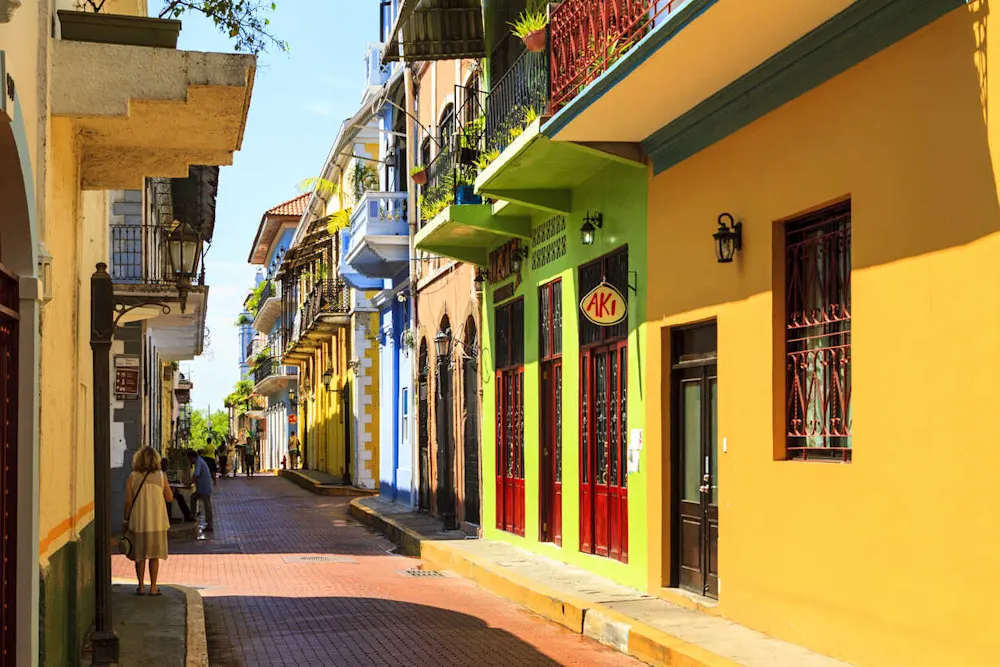
By Jess Ramesch
The first thing you need to know about Panama is that it will surprise you… again and again.
And perhaps the best surprise, one of the things that made me feel instantly comfortable when I left my Miami-based job and moved to Panama City, is how international it is.
Wherever in the world you’re from, that makes for an easy landing. It’s the kind of place where you’ll get a friendly hola… or hello, ciao, konnichiwa, bonjour, buenos días… we speak all languages here. Walking the aisles of a nice supermarket or mall in Panama is an eye-opening experience. It’s Latin America, with the friendly people and colorful cultures that entails, but also shockingly modern… and a mecca for people from all over the world.
My Dada, my grandfather, immigrated here from India after the 1947 partition, and was welcomed with open arms. Like so many others, he’d heard about the country’s prosperity… about all the riches flowing through the ports of this international crossroads.
At the nexus of North and South America, and the Caribbean and Pacific Oceans, Panama has continued to grow and thrive. Decades later, it’s the wealthiest country in Latin America by PPP.
Panama’s reputation as a land of opportunity enticed folks from India, China, Barbados, Jamaica, the U.S., France, Switzerland, you name it. Today, in Panama’s top towns for expats, you can still see their influence.
The mountain town of Boquete, where the world’s best coffee is grown, enticed many a European settler with its fertile lands and cool climes. These days this region grows some 80% of the country’s produce. It’s a land of abundance where you’ll find one of the world’s most active expat communities. (And with flower-fronted, A-frame homes on verdant hillsides, it could pass for a small Swiss town.)
The beach region where I live, just an hour’s drive from Panama’s scintillating capital, is also a magnet for settlers from afar. As the story goes, it all started in 1894, when a bloke named Gustave Eisenmann traveled here from Louisiana and bought the land that would eventually become the bustling beach hub of Coronado.
With its California-like offerings, it’s no wonder this is a coveted address for expats in the know. It’s got the constant sunshine and mild weather… the pristine beaches… and homes overlooking the warm, tropical Pacific. The view from my balcony rivals anything you could find in California, but I paid just $155,000 for my apartment here. Try doing that in San Diego!
Like Boquete and Panama City, Coronado is home to people from all over the world. And because Panamanians are so accustomed to foreigners, everyone rubs shoulders comfortably here. It’s not just diverse, it’s peacefully so. I’ve never lived in a friendlier place.
As a single woman I was looking to live somewhere I’d blend in, but also somewhere modern, beautiful, and safe. Panama was the answer. I melted into the pot so easily, I couldn’t believe it… but that’s Panama. Friendly, consistently welcoming… and full of surprises.
Get Your Free Panama Report Today!
Get Your Free Panama Report Today!
Want to discover more about retiring with ease to Panama?
Simply enter your email address below and we'll send you a FREE report - Panama: Easy, First-World Living and the World’s Best Retiree Program.
You'll receive all the latest advice on visas, property and healthcare from our most recent research.

By submitting your email address, you will receive a free subscription to IL Postcards, Overseas Dream Home, The Untourist Daily and special offers from International Living and our affiliates. You can unsubscribe at any time, and we encourage you to read more about our Privacy Policy.
Malaysia

By Keith Hockton
The unknown. For me, it felt more like wandering into a new neighborhood and spotting someone waving you over.
When I first landed, I thought I would be on the outside looking in for months. Instead, within days, neighbors showed up with bowls of curry, and suddenly I was at a family dinner, laughing at jokes I barely understood. By the end of my first month, I had already been invited to a wedding. I walked in not knowing a soul and left with new friends and a feeling that I belonged. That is Malaysia. Hospitality is not just talk here—it’s how things are.
What surprises most people is how easy it is to fit in. Malaysia is a lively mix of Malay, Chinese, and Indian, and everyone is from somewhere, so you never really feel like the odd one out. If you speak English, you’re already halfway there. You can chat with anyone, whether you’re at a hawker stall in Penang or a café in Langkawi. Suddenly, you’re not just a visitor, you’re haggling for mangoes at the market, gossiping with aunties over kopi, joining a walking group just because someone invites you. Picking up Malay comes naturally after a while, but the best part is the connections you make from day one.
Penang, for me, is the perfect place to land as an expat. It feels like a giant extended family. I still remember my first book club in George Town. I walked in nervous and walked out with three dinner invites and a packed weekend. George Town has charm, colorful streets, legendary street food, and a creative energy that draws in artists, writers, and retirees from everywhere.
Or maybe Johor Bahru is more your style. Down south, it has its own pace. Families move for affordable homes and great international schools. The Singapore border is right there, so popping over for work or a change of scene is easy. Parks fill up in the evenings with picnics and laughter, and there’s a real sense of community; everyone looks out for each other.
Then there’s Kota Kinabalu. I’ll never forget waking up to Mount Kinabalu glowing in the distance, coffee drifting in from a kopitiam down the road. The expat crowd here is adventurous and tight-knit, always planning hikes or island trips. There’s a contagious enthusiasm for meeting new faces and sharing Sabah’s best spots.
Honestly, the best thing about living in Malaysia is that you don’t have to blend in to belong. People welcome you, celebrate your quirks, and pull you into the daily rhythm. For most of us, the hardest part is not the beginning; it’s figuring out how to say goodbye when the time comes to leave.
The World’s Best Retirement Havens for 2026
The World’s Best Retirement Havens for 2026
24 Countries Compared, Contrasted, Ranked, and Rated. You don’t have to be rich to enjoy a pampered retirement, you just need to know where to go. With our 35th Annual Global Retirement Index, our experts hand you a detailed roadmap. Details—and a Special Offer—Here

By submitting your email address, you will receive a free subscription to IL Postcards, Overseas Dream Home, The Untourist Daily and special offers from International Living and our affiliates. You can unsubscribe at any time, and we encourage you to read more about our Privacy Policy.
